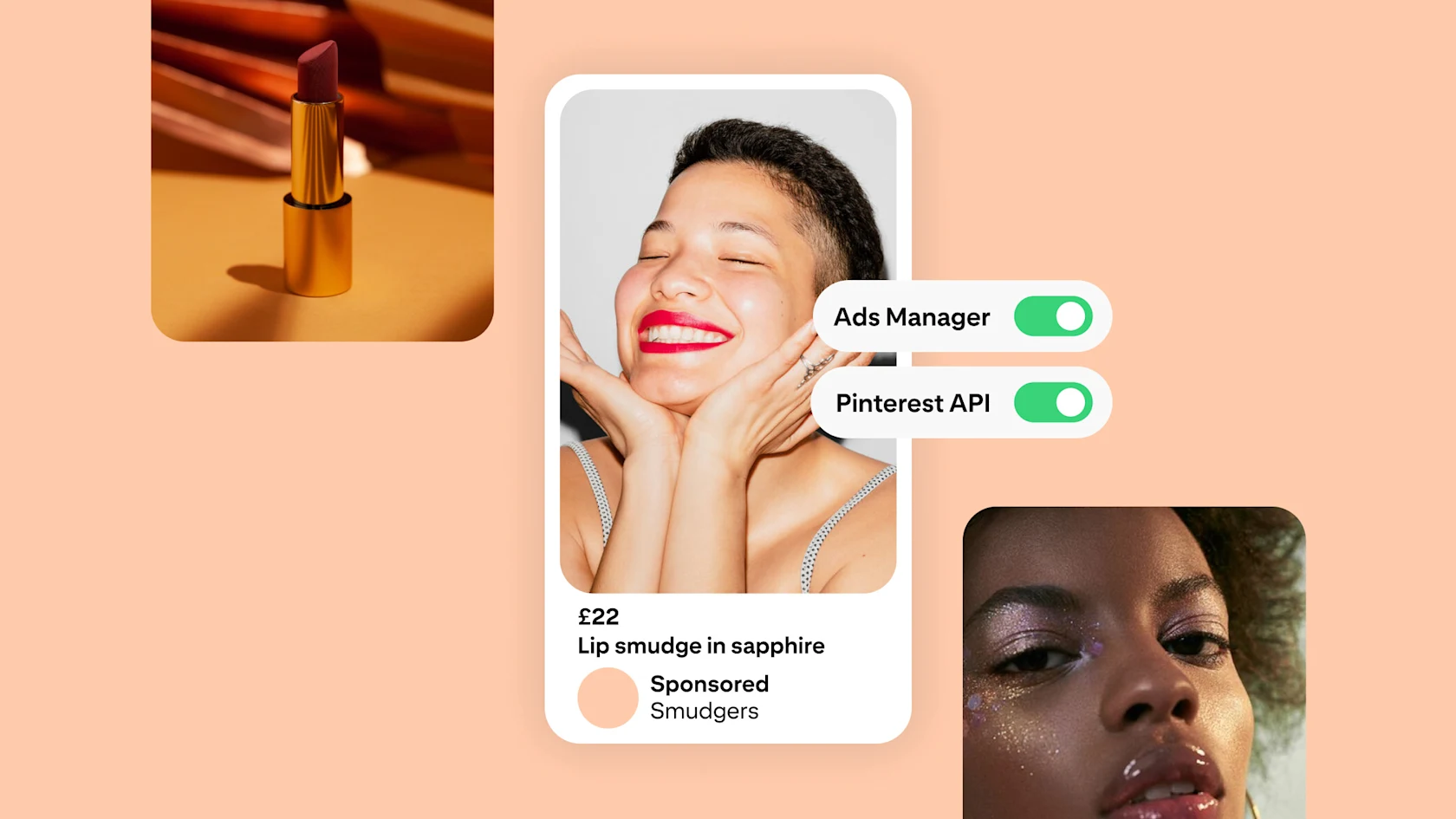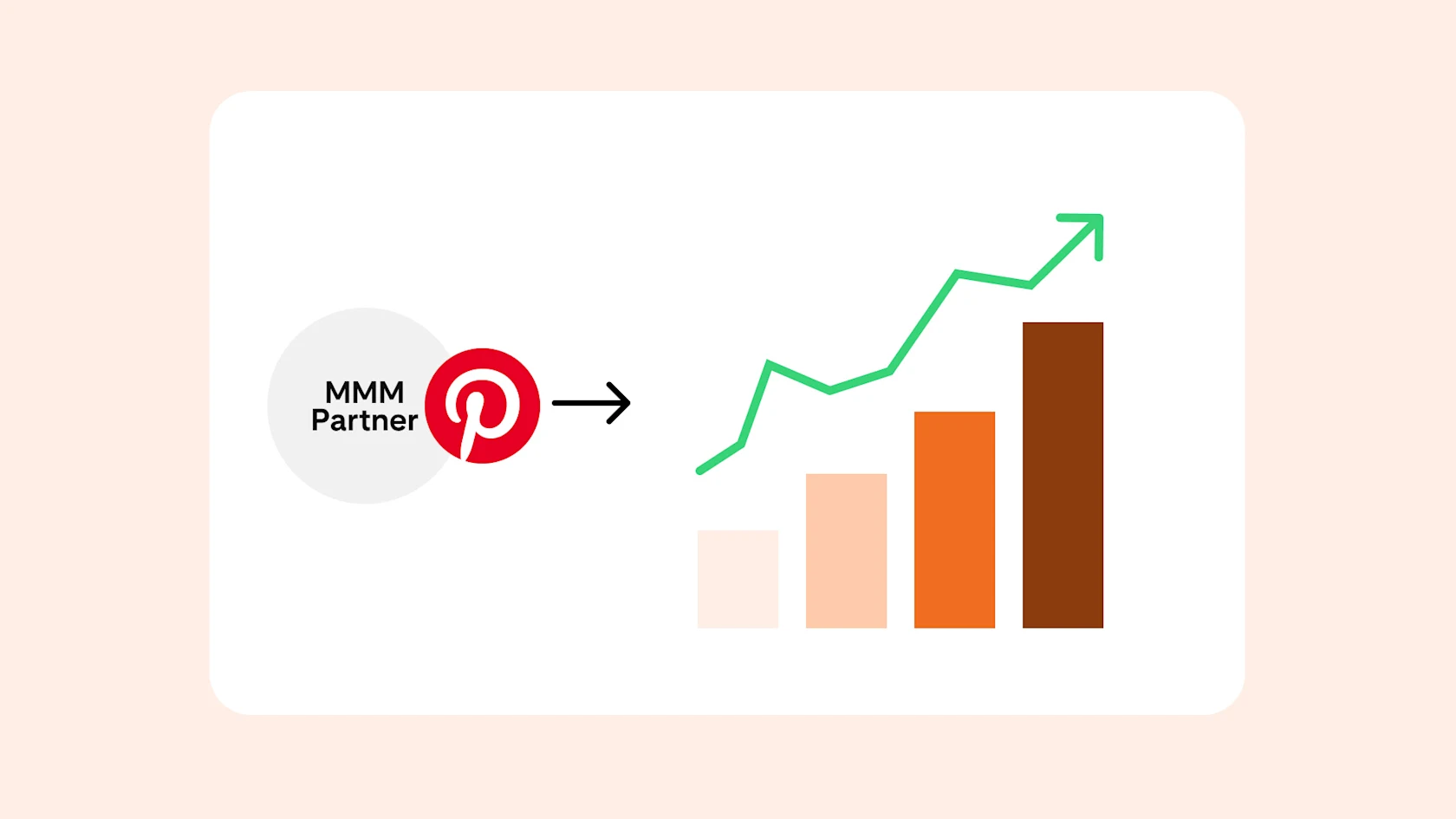Unlock the full potential of Pinterest with Marketing Mix Modelling
2 October 2024 — Antoine Le Notre, Director of Measurement, EMEA

Did you know that last-click attribution captures only 1.3% of Pinterest's impact on sales?1 This eye-opening statistic from Fospha reveals a critical truth: traditional measurement methods are leaving massive value on the table.
As the digital advertising industry continues to evolve, marketers are facing a critical juncture in measuring and optimising campaigns. While third-party cookies aren't disappearing just yet, the shift towards more privacy-centric approaches is undeniable.
The good news? You don't have to sacrifice performance for privacy. On Pinterest, leveraging Marketing Mix Modelling (MMM) can lead to equal or even better results compared to traditional cookie-based methods.
In this post, we'll explore best practices for implementing MMM with Pinterest, helping you prepare your brand to thrive in the new era of digital advertising.
Why MMM matters now
MMM isn't new, but it's experiencing a renaissance. Why? Because it offers a privacy-compliant way to measure the impact of advertising and promotions across channels while controlling for external factors outside a brand’s control, like seasonal variability or economic changes.
It helps answer crucial questions like:
What's driving your sales?
What's your true ROI across channels?
How can you optimise your marketing investment?
Unlike cookie-based solutions, MMM offers a comprehensive view of how various media touchpoints—ranging from television advertisements to social media campaigns—collectively drive sales both online and offline.
From insights to outcomes
MMM offers several key advantages in today's privacy-focused digital landscape:
Privacy compliance
MMM operates without relying on individual user data, making it inherently privacy-friendly.
Holistic viewpoint
MMM provides insights into all media actions, including impressions, not just clicks. When Häagen-Dazs commissioned external Media Mix Modelling to compare the sales impact of their media investments (including TV, social, audio, OOH and print), they made a compelling discovery. Pinterest emerged as one of the two channels generating the best ROI, proving its effectiveness at the bottom of the funnel.2 This insight might have been missed with traditional last-click attribution.
Unbiased analysis
MMM evaluates all channels objectively, avoiding the pitfalls of platform-specific attribution models.
Long-term perspective
MMM can account for both the immediate and delayed effects of marketing activities, providing a more accurate picture of campaign performance over time.
Cross-channel insights
MMM allows marketers to understand how different channels interact and influence each other, leading to more effective cross-channel strategies.
“When we measured the impact of each advertising channel via Media Mix Modelling, we could see the key role that Pinterest plays in leading our target audience to take action and were thus able to maximise our return on investment.”
Marion Petit
Senior Brand Experience Manager, Häagen-DazsPinterest has introduced two MMM-focused features for our partners:
Direct MMM reporting: Advertisers can now create, customise, and export MMM reports directly from Ads Manager. This allows you to:
Quickly access aggregated campaign data tailored for MMM analysis
Generate consistent reports across multiple campaigns or time periods
Easily integrate Pinterest performance data into your existing MMM workflows
API access for measurement vendors: Leading measurement vendors can now pull MMM data via the Pinterest API. This integration enables you to:
Seamlessly incorporate Pinterest data into your broader MMM studies
Ensure data consistency across different marketing channels
Leverage your preferred measurement partner's expertise with reliable Pinterest data
These new capabilities are designed to help you turn insights into actionable outcomes by leveraging the full potential of MMM.

Four best practices for MMM with Pinterest
To help you maximise the value of MMM on Pinterest, we've cultivated a set of best practices designed to optimise your results. These strategies are based on thorough research, successful case studies and industry standards. By implementing these practices, you can enhance the accuracy and effectiveness of your MMM efforts on Pinterest.
1. Collect earned and paid impressions
Pinterest's unique ecosystem means brands often have a strong organic presence alongside their paid campaigns. Content on Pinterest lasts, on average, over 100 times longer than on other platforms.3 This longevity means that a Pin can continue to engage users and drive actions long after it's first posted.
For example, a fashion brand might post a Pin showcasing a summer dress in May. Unlike on other platforms where content quickly disappears from feeds, this Pin could continue to be discovered, saved, and drive traffic well into August or even the following year.
Action step: Integrate both organic and paid media efforts in your MMM to get a true picture of your brand's impact on the platform.
2. Consider Pinterest's longer conversion cycles
People who use Pinterest are planners, leading to longer conversion cycles compared to other platforms. As mentioned above, traditional last-click attribution models capture only 1.3% of Pinterest's impact, meaning you'd miss over 98% of its true influence on sales.1 A commissioned study conducted by Nielsen in Germany found that in the beauty and personal care category, Pinterest delivered the highest return on ad spending (ROAS) compared to other social media, TV, online video, online display and print.4 Additionally, a study across several European countries revealed that 1 in 2 beauty campaigns on Pinterest helped drive a significant lift in action intent.5
Action step: Adopt MMM approaches that account for these longer engagement periods. Consider the entire customer journey on Pinterest, from discovery to decision to action.
3. Focus on high-quality impressions
Not all impressions are created equal. Recent research showed that Pinterest outperformed other platforms in attention metrics:
Pinterest helped drive 170% more "total attention" compared to other platforms.6 Total attention includes both active engagement (like clicking or saving) and passive viewing, giving a complete picture of ad impact.
Passive attention on Pinterest was found to be 730% higher than other platforms.7 This means users spent more time absorbing content without immediate interaction, which can lead to stronger brand recall and future actions.
Keep this in mind when looking at your ad data, and give credit where credit is due.
Action step: Update your MMM models to account for the quality of impressions on Pinterest. Use a multiplier or other method to reflect their higher value. For example, if a Pinterest impression is 1.5 times more valuable than an impression on another platform, adjust its value accordingly in your analysis.
4. Adapt to Pinterest's evolving ad formats
Pinterest has been innovating rapidly, tripling our ad product offerings in 2023 alone. However, many existing MMMs are only based on our longstanding ad formats like the standard Pin, and may not accurately reflect the multiple ways you can reach consumers across the full funnel on Pinterest.
Action step: Review and update your MMM models to account for these new ad formats and their performance data. We recommend to discount or disregard older results (pre-2023) to make sure you are basing your future decisions on your current way of working with us.

Maximise your marketing impact with Pinterest’s MMM solutions
As the digital advertising landscape evolves, MMM offers a robust, privacy-compliant way to measure and optimise your marketing efforts. Partnering directly with Pinterest helps elevate your strategy to the next level. For example, Pernod Ricard, partnered closely with us on their MMM, measuring performance across many of their portfolio brands. The results revealed that Pinterest is a top-performing platform, delivering a 35% year-over-year increase in ROI and a 21% year-over-year increase in effectiveness.8 By continuously optimising their campaigns and leveraging Pinterest’s unique capabilities, they achieved significant performance gains.
With Pinterest, you can gain direct access to your data source, ensuring your models are built on the most accurate foundation. We provide granular data tailored to your needs, complemented by insights from third-party studies. These validated best practices can shape your strategy and help boost your ROI.
By embracing these advantages, you're not just adapting to a cookie-less future—you're positioning your brand to thrive in it.

